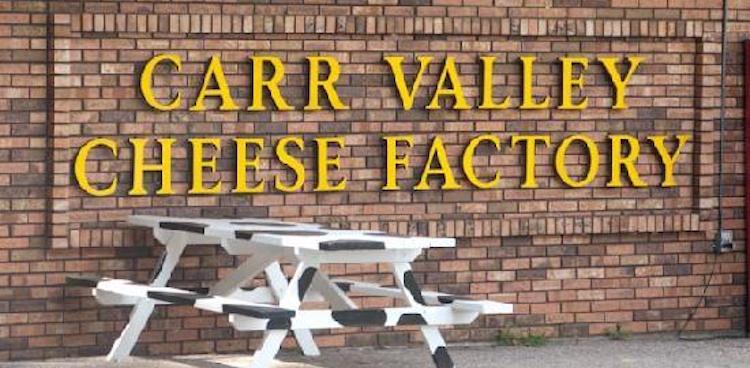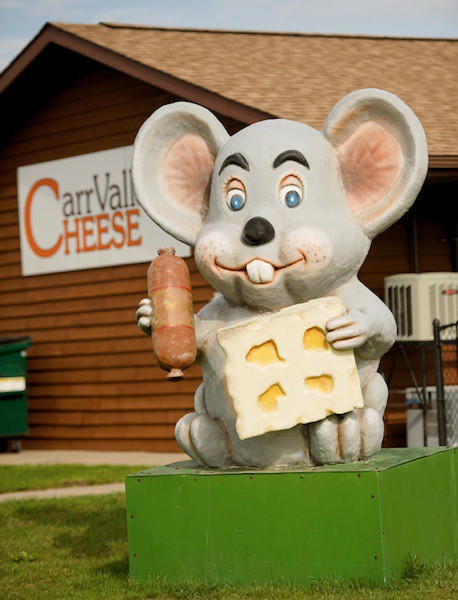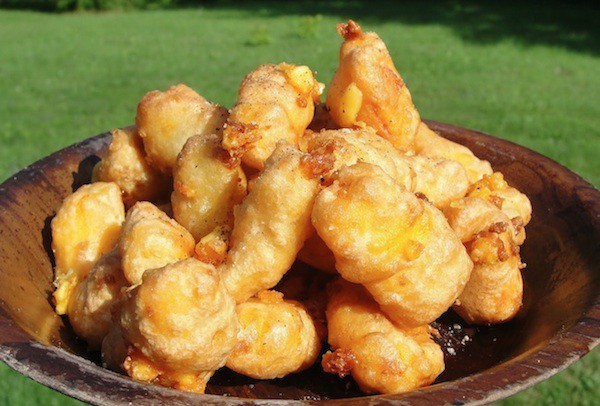
In this blog series intern Briana finds artisan cheesemakers from six regions around the country that represent our cheese nation. Venture along the ride as she goes coast to coast, discovering what makes the U.S. home to great artisan cheese. Read on and find out how you can win a subscription!
America’s Dairyland
Let’s play a game: When I say Wisconsin, what do you say? If you answered cheese, you’re correct. No other state is better known for cheese than America’s Dairyland. Dairy production dates back to the 1890s, when farmers shifted from wheat to dairy as a more profitable use of their land. Today, Wisconsin produces a quarter of America’s cheese.
With over 600 varieties of cheese produced in Wisconsin, one stands out from the rest: cheddar. Not the processed singles, but real cheddar cheese. While cheddar’s roots may be English, its history with America goes way back. It was one of the first cheeses to be produced in the U.S. and gave Wisconsin its nickname. Small cheesemakers making cheddar reigned in the early 20th century, then faced hard times after the boom in processed cheese in the 1950s. Thankfully, artisan cheese is back on top. At this year’s American Cheese Society competition held in Madison, Wisconsin dominated with 92 awards in total. One creamery took home 13 of those awards, and the man responsible is Sid Cook of Carr Valley Cheese.
A Cheese Icon
Perhaps no one else in cheesemaking has a longer resume than Sid Cook. A fourth-generation cheesemaker, he is something of a decorated hero in the cheese world. He is one of few certified Master Cheesemakers in the United States and holds the most awards of any U.S. cheesemaker. Coming from a long line of cheesemakers, Sid grew up on his family’s dairy, Irish Valley and earned his cheesemaker’s license at 16. He toyed with the idea of becoming a lawyer, but ultimately decided to carry on the tradition of cheesemaking at Irish Valley. He and his family made traditional cheeses like Colby and block cheddar, but Cook had bigger dreams.
In 1986, Cook purchased Carr Valley from the Mueller brothers whose family had owned it since 1902. Cook and his brother had taken over Irish Valley from their father in 1976, but saw no room to expand. At Carr Valley, Sid began experimenting with flavors and techniques beyond basic cheddar that he could sell to small retail shops and restaurants. He had room to grow at Carr Valley and the inspiration flowed. Sid is famous for his unique and inventive cheeses like Cocoa Cardona, an aged goat cheese rubbed with cocoa.
Sid says part of the inspiration for new cheeses comes from customers. With eight cheese stores in central Wisconsin, Carr Valley interacts directly with their clientele. Customers will either suggest cheeses or ask for certain types. He also cites the Master Cheesemaker program and the Wisconsin Center for Dairy Research as inspiration.
Today, Carr Valley is a growing and highly influential creamery. Operating four factories and eight outlet stores, they produce 4 ½ million pounds of cheese a year. Their squeaky cheese curds are the biggest sellers, selling an upwards of 3,000 pounds a day. While their production is staggering, Sid promises quality over quantity. “Our cheesemakers actually make the cheese,” he says.
Compared to other mammoth Wisconsin producers, Carr Valley is a relatively small business. With an average of one cheese factory every six miles, competition among cheesemakers was ever-present. Yet Sid tells me that, “size is in the eye of the beholder.”
Sid says by not having animals on site, they are able to put all the focus on the cheese. They currently produce about 80 varieties of cow, goat, and sheep’s milk cheese. Just don’t tell Sid they don’t make artisan cheese. “Artisan doesn’t have to mean making one cheese.”
No Refrigeration, No Problem
Cheddar is a not only a symbol of Wisconsin, but a hallmark of Carr Valley. They sell day-old to ten-year-old cheddars, all with distinct differences in taste and texture. Their milk is sourced from about 25 local dairies and occasionally from co-ops.
As Wisconsin’s only cave-aged cheddar, Carr Valley Cave-Aged Cheddar has a lot to live up to. Wrapped in cheesecloth and aged in open-air caves for 9 months to a year, it develops a natural moldy rind. Since cheesecloth allows cheese to breath, the flavors of this cheddar are deep and concentrated. Sid says the flavor of the cave-aged cheddar is reminiscent of the cheese his family made 60 or 70 years ago, when there was no refrigeration.
“When I was a child, I used to sit around and listen to my uncles talk about putting the last cheeses away in the fall in the cellars,” he says. Sid wanted to make a cheese that harkened back to the past. So was the inspiration for their cave-aged cheddar, a nod how cheese use to be made.
Fear not, Carr Valley makes more than cheddar. Their sheep and goat’s milk cheeses have won praises from cheese competitions and tasters alike. Don’t miss out on Cave-Aged Marisa, a sheep’s milk cheese aged in their caves. Carr Valley certainly respects tradition while keeping creativity alive. One such example of this creativity is their “celebration cakes” made entirely out of cheese. Set up to look like a traditional cake, Sid tells me they sell about 14 or 15 a year. One such cake may consist of a big wheel of cheddar on the bottom, then their Benedictine, and a small blue wheel on top.
“[Cheese] is actually really good with wedding cake,” says Sid. “And at the party after, they’ll use the leftover cheese to make grilled cheese sandwiches.”
Learn more about Carr Valley‘s cheeses from these three Tasting Tuesdays:






